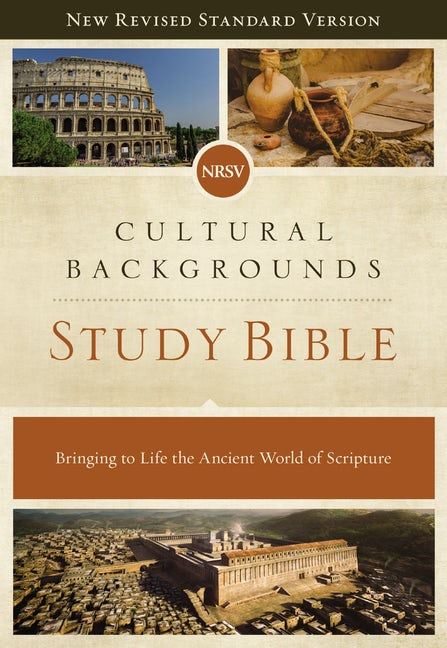Study Bibles often focus on helping readers apply the Bible to daily life. To be sure, applying the Bible to daily life is very important. Yet those who read the Bible enough can glean most principles from the Bible directly. After all, God’s story in the Bible is designed to be understood by children.
As Jesus said, “I thank you, Father, Lord of heaven and earth, because you have hidden these things from the wise and the intelligent and have revealed them to infants” (Mt11.25), and “Truly I tell you, unless you change and become like children, you will never enter the kingdom of heaven” (Mt 18.3).
Hearing God’s personal challenge from the Bible itself is more direct than hearing a challenge from someone else’s comments. Spiritual life comes from God’s Word itself. The complication is the gulf between the world of the Bible and the modern reader’s world. The problem is normally not that the modern reader doesn’t know their own world; it’s that the reader is not familiar with the world of the Bible. It is here that a study Bible can help most by explaining the language, literature, and culture of the Bible.
How will understanding the Bible’s cultural background improve my faith walk?
There is no such thing as a story or a teaching that doesn’t have a cultural setting. That is not to say that a story or teaching is not relevantfor another setting, but to remember that it comes to us from a particular place and in a particular language.
God sent his Son Jesus Christ in the flesh, in a specific home, nation, town and era. Likewise, God didn’t send the Bible as a trans-cultural feeling or impression but gave it to us through the experiences that real people had in real historical situations.
Readers from different cultures bring a range of experiences and insights to their Bible reading. The place where we come together, however, is when we read God’s Word in the concrete framework in which he gave it. It is especially when we hear the message in its authentic, original cultural setting that we can reapply it afresh for our own different settings most fully because we understand what issues were really being addressed.
How can we know for sure what the Bible’s ancient culture was like?
As a result of the recovery of over a million texts from the ancient world and a century of persistent research by scholars, we are now in a position to add significant nuances to our understanding of the life and thought of those who lived in Israel in Bible times. The end result is a more thorough and comprehensive understanding of the text.
Through understanding the background, we can better understand why people spoke and acted the ways they did and can better identify with them. Besides helping us understand the world in which people in the Bible lived, study of ancient texts from the cultures in the Biblical world can provide information that we really need to understand the Biblical material.
If, as readers, we are isolated from the cultural background of the Bible, we might be inclined to think that the ideas in the Biblical text have no anchors in time and culture.
How do we understand the Bible—a book that billions have turned to over multiple centuries and many cultures—as literature in its ancient context?
Readers today approach very differently such different sorts of writings as satire, news reports, or a declaration of war. Knowing a work’s intent is an important key for understanding it. It should therefore be no surprise that the inspired authors of the Bible adapted genres (literary types) that already existed in the larger culture; otherwise the first audiences would not have known the intent of these works.
Whether we are looking at wisdom literature, hymnic literature, historical literature, legal literature, or the letters in the NT, we find generous doses of both similarities to and differences from the Biblical text and the literature of the time. Understanding the genre of a piece of literature is necessary if we want to more fully understand the author’s intentions. Since perceiving an author’s intentions is essential to our theological interpretation of a text, we recognize that understanding genre contributes to legitimate theological interpretation. Some genres will operate differently in the ancient world than do the most similar genres in our own culture so we must become familiar with the mechanics of the genres represented in the ancient Near East and the Greco-Roman world.
In light of all of this, we can logically conclude that without the guidance of comparative studies, readers in cultures removed from the ancient world are bound to misinterpret the text at some points.
Craig S. Keener andJohn H. Walton are editors of the NRSV Cultural Backgrounds Study Biblepublished by Zondervan. Dr. Keener is F. M. and Ada Thompson Professor of Biblical Studies at Asbury Theological Seminary in Wilmore, Kentucky. Dr. Waltonis professor of Old Testament at Wheaton College Graduate School.

Book Cover: Courtesy of the publisher
Article Image Credit: Pexels/Oladimeji Ajegbile









